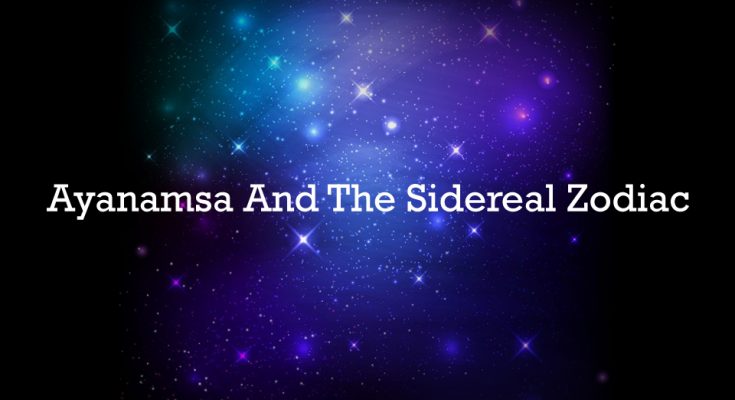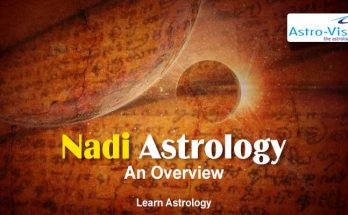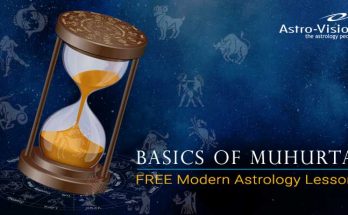Identifying First Point of Aries
There is a wide spread speculation in identifying the correct date of the Ayanamsa or when it was at exactly 0° of the Zodiac or of the first point of Aries. Many hypotheses have been put forward each greatly differing from the other. The following questions need to be addressed in this context before going forward with the vexed question of Ayanamsa.
1.How and when was the Precession of the Equinoxes first detected?
2.How has the problem of the Precession of the Equinoxes teen solved?
3.What has been the method to work out the exact rate as well as time of the Precession of the Equinoxes?
In the Vedic period, the problem of the Precession of the Equinoxes was not immediately detected; therefore the calendar of those times (observable calendar through the naked eye) did not show any remarkable change in performance of sacrifices. However after a long lapse of 2000 years or more, a seasonal shift was detected by the then priests and especially their predictions regarding arrival of the rains in a particular month failing. The apparent reason of the failure of rainfall predictions was the shifting of seasons due to the Precession of the Equinoxes. It also altered the days and months of sacrifices being performed then. In ancient Vedic times, the Precession of the Equinoxes was also termed as shifting of seasons. The Ayanamsa of today as expressly stated by the Calendar Reform Committee as constituted by Government of India too has been more concerned in bringing about an uniform pattern for Indian festivals and other social ceremonies more than its importance in predictive angle. There were many method devised to resolve this problem. Notably among them was the introduction of intercalary months, introducing the luni-solar calendar and even the Zodiac being divided into 12 equal parts so that the passage of the Sun through these parts could correspond with particular seasons. It is clearly mentioned in Vedanga Jyotisha, a small treatise on the history of astronomy of India covering the Vedic period, a particular point in the sky known as Varuna was taken into consideration for the measurement of the phases of the Moon. On the basis of the appearance of the Moon, even thirteen months were observed in a year.
Vernal Equinox Date
In the absence of any direct evidence to fix the date of the commencement of the Precession of the Equinoxes, it was quite impossible, to work out the exact date of the beginning of the Precession. However on the basis of indirect references contained in Rigveda, Taittariya Samhita etc. many hypotheses were put forward to work out a particular value of the Ayanamsa and many new phrases in the light of advanced knowledge of astronomy have been introduced such as refractive index, gravitational force, difference in observable phase, actual phase etc. But in spite of having such moderns tools of astronomy, no satisfactory answer has been found so far regarding the true value of Precession. Many new concepts were introduced which only made the issue more complex. The date 499 A.D as the date of the Vernal Equinox or the point of 0° of Aries sign was worked out by Sri Yukteshwar.
Both Surya Siddhanta and Aryabhatiya proposed 4,32,0000 years as the total period of a Maha Yuga. This period was further divided into four segments or Yugas and Kali Yuga was assigned a total period of 4,32,000 years. However Sage Lagadha divided the period into five Yugas, the foremost one being Deva Yuga followed by Krita Yuga and so on. The supporters of Surya Siddhanta say that 12000 divine years or the years of the gods have been converted into human years by multiplying 12000 x 360 = 432000 years. It was an intended error to divide the time unit between God’s day and human days so that Kali era would continue indefinitely; otherwise the Kali era had ended many times. The actual Yuga in fact consists of 12000 years. However due to ascending and descending motion of time, the total time period assigned to a Yuga was 24000 years. Sri Yukteshwar’s work was based on this figure. It is also pertinent to note here that in olden times the Precession of the Equinoxes was observed on the basis of Nakshatra to Nakshatra. It is also important to note that the series of Nakshatras in olden times began with Krittika, not with Aswini. However with the arrival of Greeks in India the Nakshatras series was reconstituted and it started with Aswini Nakshatra. However up to the period of the Greeks in India, no one used the Rasis or signs as a method to calculate the Ayanamsa. Therefore it was the era of Sri Yukteshwar in which the transition from Nakshtra-based calculation to Rasi-based calculation took place.
Sri Yukteshwar identifies the date of 0″ Ayanamsa i.e. the coincidence of the Niryana and Sayana Zodiacs based on two assumptions.
Yukteshwar’s Asumptions
First Assumption
The fixing of coincidence of both the Zodiacs was based on the statement of Aryabhata in Aryabhatiya (Kalakriya Section Verse 10)
षट्यब्दानां षश्टिर्यदा
व्यतीतास्त्रयष्च युगपादा ㅣ
त्र्यधिका विशतिरब्दास्तदेह
यम जन्मनोतीताः ∥
When sixty times sixty years and three
quarter Yugas had elapsed, twenty three years
had then passed since may birth.
Here, three quarters of Yugas means Krita, Treta and Dwapara had elapsed and it was then Kali Yuga. It means 3600 years had elapsed since the beginning of Kali Yuga. Many scholars have taken 3101 B.C. as the beginning of Kali Yuga.
So 3102 – 3600 = 499 A.D.
499 A.D. was taken as the year in which the compilation of Aryabhatiya was done and die birth year of Aryabhata is taken to be 499-23 = 476 A.D.
It is stated by the commentator of Aryabhatiya that the Precession of the Equinoxes was Zero in 499 A.D. Therefore the 499 A.D. was taken as Zero year by Sri Yukteshwar.
Second Assumption
The second assumption of Sri Yukteshwar is from his book Holy Science where he mentions in the introductory chapter that in the year 11501 B.C. the Vernal Equinox was in Libra sign and the Autumnal Equinox was in Aries. Here Sri Yukteshwar differs from other astronomers who have placed the Vernal Equinox in Aries sign.
As the revolution of the of earth against the background of the stars has been taken to be 24000 years, Sri Yukteshwar divided this period into two halves each one of 12000 years. It simply means Taurus to Libra signs are covered in 12000 years and from Virgo to Aries again takes 12000 years. Thus the complete Zodiac is covered in 24000 years.
According to Sri Yukteshwar, the Vernal Equinox was in Libra sign in the year 11501 B.C.; therefore, to reach 0° of Aries, the V.E. would take 12000 years. Therefore the meeting of V.E. with the first point of Aries took place in 499 A.D. (12000-11501= 499 A.D.) It is to be noted that in the scheme of Yukteshwar, the following calculations were considered.
(i)Yuga or the ecliptic rotation around a star takes 24000 years.
(ii)24000 years were divided by 12, or 24000 / 12 = 2000 years for each sign of the Zodiac
(iii) The rate of Precession was worked out as:-
360 / 24000 = 360 x 60 x 60 / 24000 = 54″
(iv) 24000 / 360 = 66-66 years or 1° Precession takes place in 66-66 years.
The rate of Precession of the Equinoxes as 1° of precession in 66.664 years is close to the figure mentioned in Surya Siddhanta.
Let us see how the rate of Precession apart from the above calculations has been computed and derived.
Rate of Precession = (i) 360 / 24000 = 54″ (ii) 360/25920 = 50″
As per Surya Siddhanta, the Precession of the Equinoxes is an oscillating one. It moves 27° to the West, retreats again to the zero point, again moves 27° to the East and retreats again thus making an angle of 108°. The to and fro movement of the Equinox is taken as one revolution. Therefore the above cited four revolutions of to and fro movements have been taken as 2 revolutions. In this way when 108° is divided by 2, the figure obtained is 54″. Another inference which is drawn from this kind of oscillating movement of the Equinoxes is that the maximum value of the Precession of the Equinox cannot exceed the limit of 27°. After reaching the maximum limit, the Aynamsa would automatically become zero. Yet another reference which can be drawn from this oscillating hypothesis is that time also retreats. It means time is not an uniform one-direction phenomenon. It can also revert back. (Bhartiya Jyothish Sastra Vol.2)
The variation in the rate of Precession of the Equinoxes invariably depends upon the revolution of the ecliptic. If the period of revolution of ecliptic is taken to be 24000 years, the rate is 54″ per year and, 50″ if the period is taken to be 25920 years.
Different Ayanamsas
Munjala adopted 6°50′ as the Ayanamsa in Saka 854 and declared Saka 444 as Zero Precession year and adopted 1° as annual rate of Precession of the Equinoxes.
21600+3000=24600
24600 /60 = 410 years
854-410 = 444 or 522 A.D.
Keshava, the author of Vivaha Vrandavana compiled this work, when the Ayanamsa was 12° in Saka 1165 or 1243 A.D.
12 x 60 x 60 = 43200
= 43200/50.290966
= 859 years
1243 – 869 = 374 A.D.
43200/ 54 = 800 years
1243 – 800 = 443 AD.
Aryabhata II took the number of revolutions of the Ayana as 581709 in a Kalpa. According to his hypothesis, Saka 532 or 610 A.D. is the Zero Precession years.
Arva Siddhanta took the number of revolutions of the Ayana during a Kalpa as 578159. Taking one revolution as equal to 96°,the annual rate of precession would come to 2′ 52″.
1 Kalpa = 4354560000 years / 578159 = 7532 years.
i.e. one revolution takes 7532 years. = 360 x 60 x 60 / 7532 = 172 seconds.
The rate of precession would be 2 minutes 52 seconds per year.
Note: The figures for the Kalpa vary from Siddhantic text to text.
Venkatesh Bapuji Ketkar assumed Zeta Piscium to be the Junction star of Revati. He gave the Ayanamsa as 18° 10’25” for Saka 1800 or 1878 A.D.
Let us see what his figure says.
18°10’25” = 64800+ 625 = 65400
65400 / 50.290966 = 1300 years
1878 – 1300 = 578 A.D. = 50
65400 / 54 = 1211 years.
1878 – 1211 =667 A./D. = 54″
Table I
From Table I it is clear that the Zero Ayanamsa year ranges from 490 A.D. to 667 A.D. with the rate of Precession annually ranging between 54″ to 60″. And it is quite evident from the above fact that the date of coincidence changes with change in rate of Precession. Thus the year of coincidence itself becomes an arbitrary factor. However, the modern value as seen from Table I gives 50.290966 seconds per year and the coincidence of Zodiacs from 285 A.D. to 490 A.D.
Some Pertinent Questions
A few questions arise in this context.
(i) All Siddhantic works more or less are similar in determining the time of the coincidence of Zodiacs as well as the rate of Precession. Did they all make false assumptions?
(ii) What is the basis of the modern astrologer to determine the particular year of coincidence of the Zodiac and the rate of Precession per year?
It is also clear from the foregoing discussion that the time of coincidence of both the Zodiacs as well as the annual rate of precession depends upon the value taken. If the period of the revolution of ecliptic against the background of tie stars be 24000 years or 25920 years, the date of coincidence would differ by many hundred years. Similarity the rate of Precession per year too changes with the application of different periods of revolution. If the number of revolutions is taken for 24000 years the rate of precession comes out to be 54 seconds and 11 of Recession of the Equinox takes place in 66.66years. On the other hand if the number of revolutions are taken for 25920 years, then the rate of recession of the Equinox becomes 1° in 72 years. In this way the annual rate of Precession of the Equinox and date of coincidence become the factors dependent upon the arbitrary choice of the model preferred by the astronomer or astrologer.
Motion of Sun Important
However modern astrologers who take 50.2 seconds as the standard rate of annual Precession of the Equinoxes are not aware of the fact that this rate does not match with the motion of the Sun or the distance traveled by the Sun. In other words they have not considered the motion of the Sun in Tropical years and in Sidereal years. Let us see how the length of the year in respect of Tropical years and Sidereal years affects the rate of Precession. And this is the reason which explains why Siddhantic works had taken higher value of Precession.
Another very important point which is worth considering is fixing a particular Nakshatra for the measurement of the Equinoxes. In Surya Siddhanta, Zeta Piscium has been considered to be the star group of Revati Nakshatra and identified as Yogatara. For considering Zeta Piscium as the star group of Revati constellation, two conditions were considered :-
(it The star’s proximity to the ecliptic
(ii) Its brightness so that it can easily be identified.
These two conditions were also applied in the case of Chitta Nakshatra which forms the basis of Lahiri Ayanamsa.
In fact, Revati or Zeta Piscium was not near the ecliptic at the time of its adoption. It was really 30° North of the ecliptic which cannot be said to be near. Secondly, the existence of Zeta Piscium is a matter of controversy. In the case of Chitta or Spica Nakshatra, it was said to be exactly at 180° in Libra in 285 A.D. In fact the value was less than 180°. It means that it was in Virgo sign than in Libra. But this fact was ignored by Lahiri. In fact the selection of any particular star is also the choice of the astronomer. You can take any point as a fixed one provided it should be recognized easily and it should be near the ecliptic.
Courtesy : Modern Astrology (Dr. Arastu Prabhakar, MSc., MBA, Ph.D)
To be continued…










One Comment on “Ayanamsa And the Sidereal Zodiac”